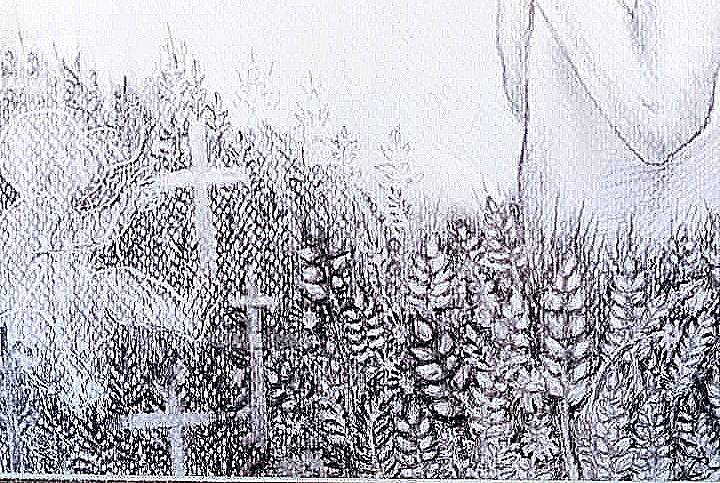International Scientific and Practical Conference “Interdisciplinary Approaches to the Holodomor-Genocide Study”
Holodomor Research Institute
Taras Shevchenko National University of Kyiv
Ukrainian Genocide Famine Foundation (Chicago, USA)
Borys Grinchenko Kyiv University
Kamianets-Podilskyi National Ivan Ohiienko University
(Department of History of Ukraine)
Zaporizhzhia National University
Yuriy Fedkovych Chernivtsi National University
National Museum of the Holodomor-Genocide
Ukrainian Institute of National Memory
Khmelnytskyi College of Trade and Economics
of Kyiv National University of Trade and Economics
Khmelnytskyi Regional Institute of Postgraduate Pedagogical Education
Ukrainian World Congress
All-Ukrainian Human Rights Protection Organization “Memorial” named after Vasyl Stus
Public Committee for the Commemoration
of the Victims of the 1932–1933 Holodomor-Genocide in Ukraine
Khmelnytskyi Regional and City Organizations
of National Union of Local Lore Researchers in Ukraine
Volodymyr Krasytskyi Khmelmytskyi Gymnasium No. 1
To the 87th anniversary of the Holodomor-Genocide in Ukraine
Dear colleagues!
We announce 4th International Scientific and Practical Conference “Interdisciplinary Approaches to the Holodomor-Genocide Study” which will be held on November 19, 2020, 10 a. m. in the National University of the Holodomor-Genocide (3 Lavrska Street, Kyiv).
In the 21st century, accumulation of factual knowledge about the Holodomor-genocide naturally changed with its synthesis, creating of new concepts and scholar schools. Holodomor Research Institute develops historical, political, legal, social, and demographic aspects of the Holodomor-genocide, studies medical and latent moral and psychological effects of the crime, aimed against Ukrainian nation.
The purpose of the conference is interdisciplinary exchange of research results of the scholars who study the Holodomor-genocide in the spheres of history, political science, law, medicine, statistics, sociology, criminology, pedagogy, anthropology, historical demography, social psychology, historical geography, and other fields. Such cooperation will contribute to fundamental research of Ukrainian and Western scholars, renewal of the conceptual and categorical apparatus, correlation of research practices with modern ideas about research methodology.
QUESTIONS FOR DISCUSSION
- Interdisciplinary approaches to the Holodomor-genocide studies.
- Social, economic, political, law, demographic, moral, psychological components and prolonged effects of the Holodomor-genocide of 1932–1933 in Ukraine.
- Convergence of research results of scholars who study the Holodomor-genocide from the perspectives of history, political science, law, medicine, statistics, sociology, criminology, pedagogy, anthropology, historical demography, and historical geography.
- Research of the Holodomor remembrance; instrumentalization of memory in politics, law, history and demography.
- Oral history: everyday life of Ukrainians during the Holodomor-genocide.
Scholars from various research fields are invited to participate.
Conference proceedings will be published in a collection.
Only reports (articles) which meet the requirements below are accepted for publication.
Registration: https://forms.gle/LkG9t1i1MVLq8K3t6
Deadline for registration: October 31, 2020.
Contact person: Tetiana Shvydchenko, [email protected], +38063 144 23 86
REQUIREMENTS FOR MATERIALS
TO BE SUBMITTED FOR PUBLICATION
(please send them to [email protected])
The file mane of the article must contain the name and surname of the author, for example Petrenko-M.-T.doc.
General requirements for the article
- The article must be submitted in .doc or .docx format.
- 2 cm margins on each side, Times New Roman, 14 pt, 25 cm paragraph indentation, 1.5 line spacing. Pages must not be numbered. All non-text objects must be created using Microsoft Word tools (Microsoft Excel Chart, Microsoft Equation).
- Optimal size of the article is 20,000–24,000 characters with spaces (10–16 A4 pages).
- English translation of the title, summary and key words of the article must be appropriate and professional; using of translation programs and automated translation tools is not allowed.
Requirements for the text
Information to be given before main text of the article:
- name and surname of the author, their position, name of the institution, academic title (all items centered);
- name of the article (bold, all capital letters, no paragraph indentation, centered);
- summary in the article language (without the word “Summary”; paragraph indentation, page width alignment, single line spacing, italic, about 1,000 characters with spaces);
- key words in Ukrainian (the phrase “Key words: in bold; paragraph indentation, page width alignment, single line spacing, italics, max. 5 words).
Requirements for the article main text
- general statement of the problem and its connection with important scientific and practical tasks;
- analysis of resent publications on the topic;
- aims (purpose) of the research;
- main results and their reasoning;
- consequences and further research prospects;
- reference list in the language of sources originals;
- summary and key words in English (about 1,000 characters with spaces).
The references must be given after the main text of the article. Indexes of the references must be given in the text in square brackets with ascending numbering (e. g.: [1, p. 12]… [15, p., 1] in accordance with the requirements of DSTU 8302: 2015).
Tables, schemes, figures, diagrams must be placed without paragraph indentation in the center of the page immediately after they are mentioned in the text of the article. The word “Table” and its number must be right-aligned in italics at the top, and the name of the table must be given in the center of the line below. Other illustrations, also numbered, must be signed at the bottom and centered.
Materials that do not meet the requirements above will not be considered.
The author is responsible for the correctness and accuracy of the submitted material, accurate citation of sources and references.
The materials will not be reviewed.
Follow the updates omn the site of the Holodomor Research Institute.
